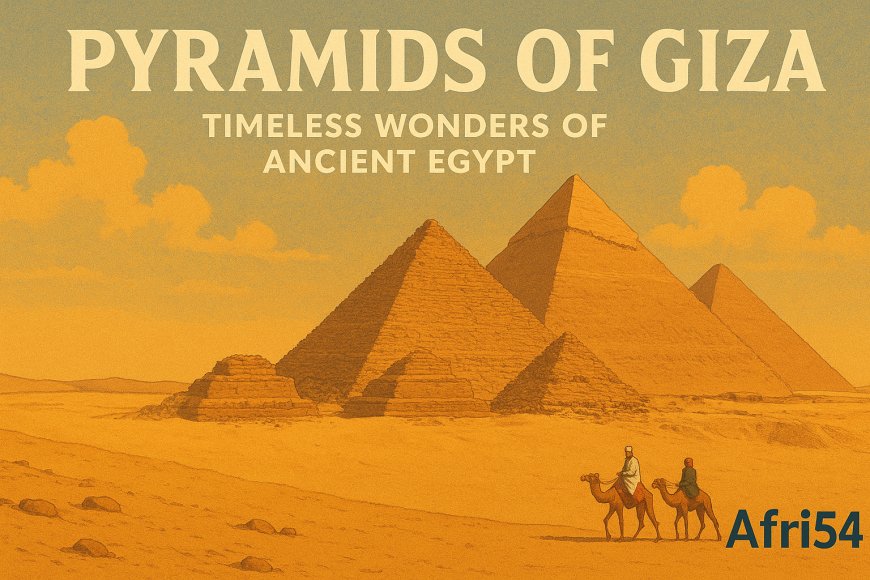Pyramids of Giza: Timeless Wonders of Ancient Egypt
Discover the Pyramids of Giza, one of the Seven Wonders of the Ancient World. Learn about their construction, history, and enduring legacy as symbols of Ancient Egypt.

Reading Time: ~7 minutes
Few monuments capture the imagination like the Pyramids of Giza, among the most iconic structures in human history. Built around 2600 BCE, these colossal stone structures have stood for over 4,000 years as testaments to the ambition, skill, and spiritual devotion of Ancient Egypt. Recognized as one of the Seven Wonders of the Ancient World, they remain the only one still standing today.
The Great Pyramid of Khufu
The largest of the Giza pyramids, the Great Pyramid, was constructed for Pharaoh Khufu (Cheops). Originally standing at 146 meters (480 feet), it was the tallest man-made structure in the world for over 3,800 years. Composed of around 2.3 million limestone blocks, each weighing several tons, the precision of its construction continues to amaze historians, engineers, and visitors alike.
The Pyramids of Khafre and Menkaure
Next to Khufu’s pyramid stand the pyramids of his successors — Khafre and Menkaure. Khafre’s pyramid is slightly smaller but appears taller due to its elevated location and the remnants of its smooth casing stones near the top. Menkaure’s pyramid, though the smallest, is remarkable for its more intricate design and use of granite in its lower courses.
Together, the three pyramids form the Giza Necropolis, a royal burial ground that reflects the Egyptians’ deep belief in the afterlife.
The Sphinx and the Necropolis
Guarding the pyramids is the enigmatic Great Sphinx of Giza, a colossal limestone statue with the body of a lion and the face of a pharaoh, often thought to represent Khafre. The surrounding necropolis includes mastabas and tombs of nobles, priests, and officials, painting a vivid picture of Egypt’s complex social and spiritual order.
Engineering Marvels
The Pyramids of Giza demonstrate extraordinary engineering. Alignments with the cardinal points, precise measurements, and advanced logistics for quarrying and transporting stone blocks reveal the Egyptians’ remarkable mastery of architecture and mathematics. Modern theories suggest ramps, levers, and vast labor forces, but much about their construction remains a subject of debate and fascination.
The Pyramids Today
Despite millennia of erosion, earthquakes, and human activity, the Pyramids remain among the world’s top tourist destinations. They symbolize not only Ancient Egypt but also the enduring human desire to create monuments that outlast generations.
UNESCO recognizes the Giza Pyramid Complex as a World Heritage Site, securing its place in global cultural memory.
Why the Pyramids Matter
The Pyramids of Giza embody the vision, power, and spirituality of Ancient Egypt. They remind us of humanity’s ability to achieve greatness through collective effort and ingenuity. Their presence connects us to a civilization whose influence still echoes through time.
Final Thoughts
The Pyramids of Giza are more than ancient tombs — they are enduring symbols of human ambition and the mysteries of life and death. Standing before them is to stand before history itself.
Have you listed your business on Afri54?
Afri54 exists to solve a fundamental challenge faced by millions of African businesses: lack of visibility. Whether you’re an automobile part seller in Lagos, a local attire manufacturer in Kigali, a coffee exporter in Addis Ababa, or a mobile phone supplier in Accra, you deserve to be seen. Join now






















